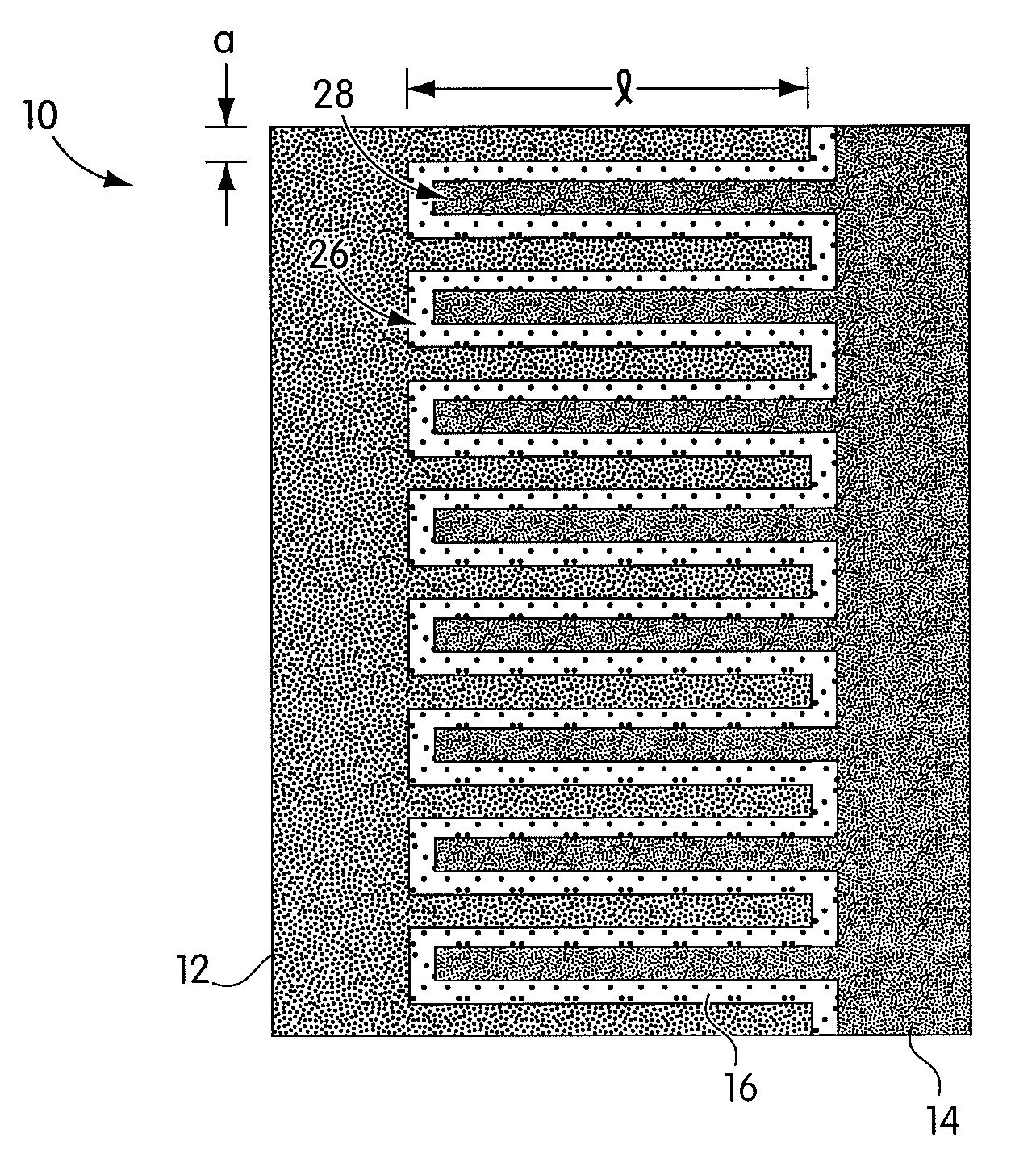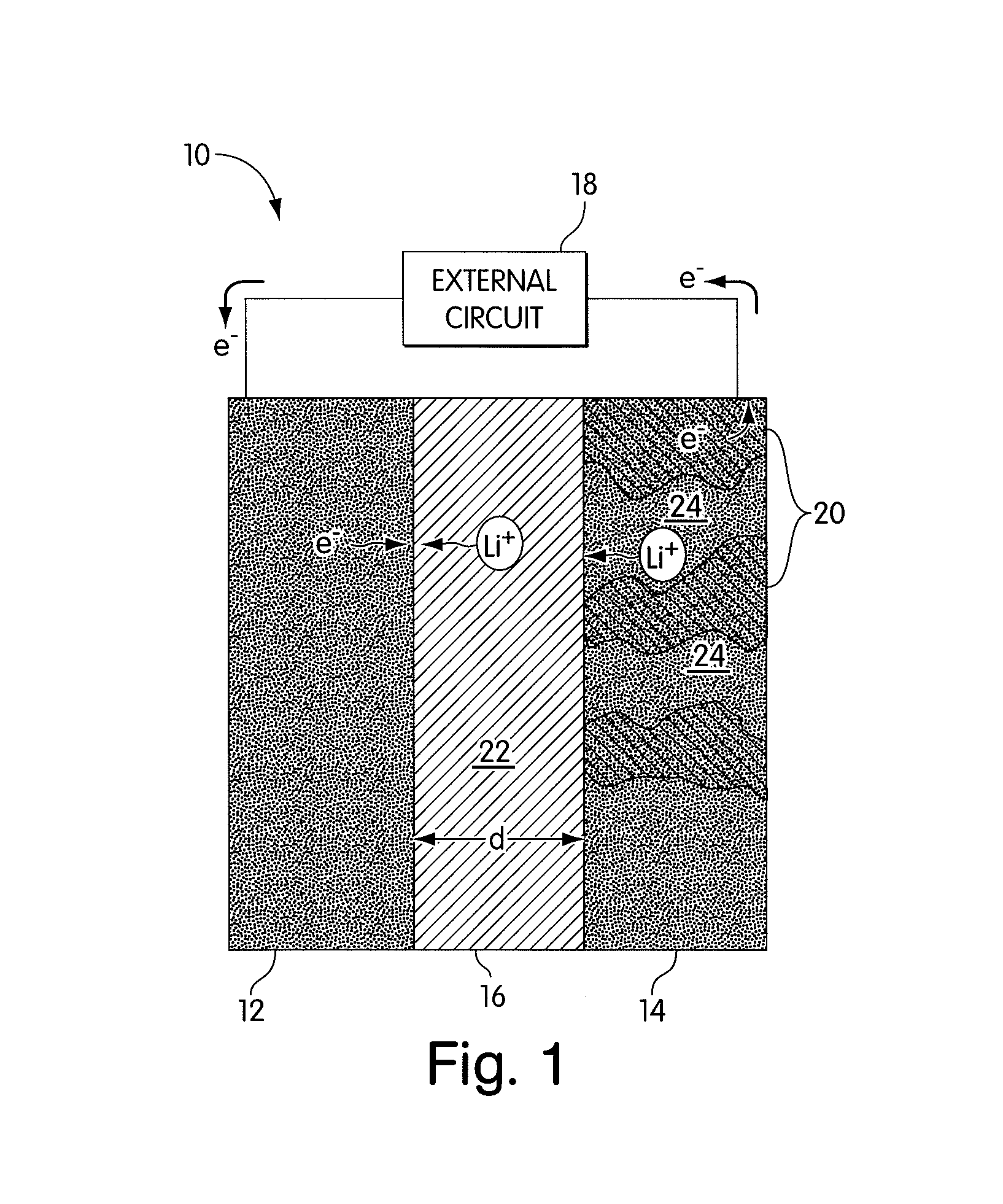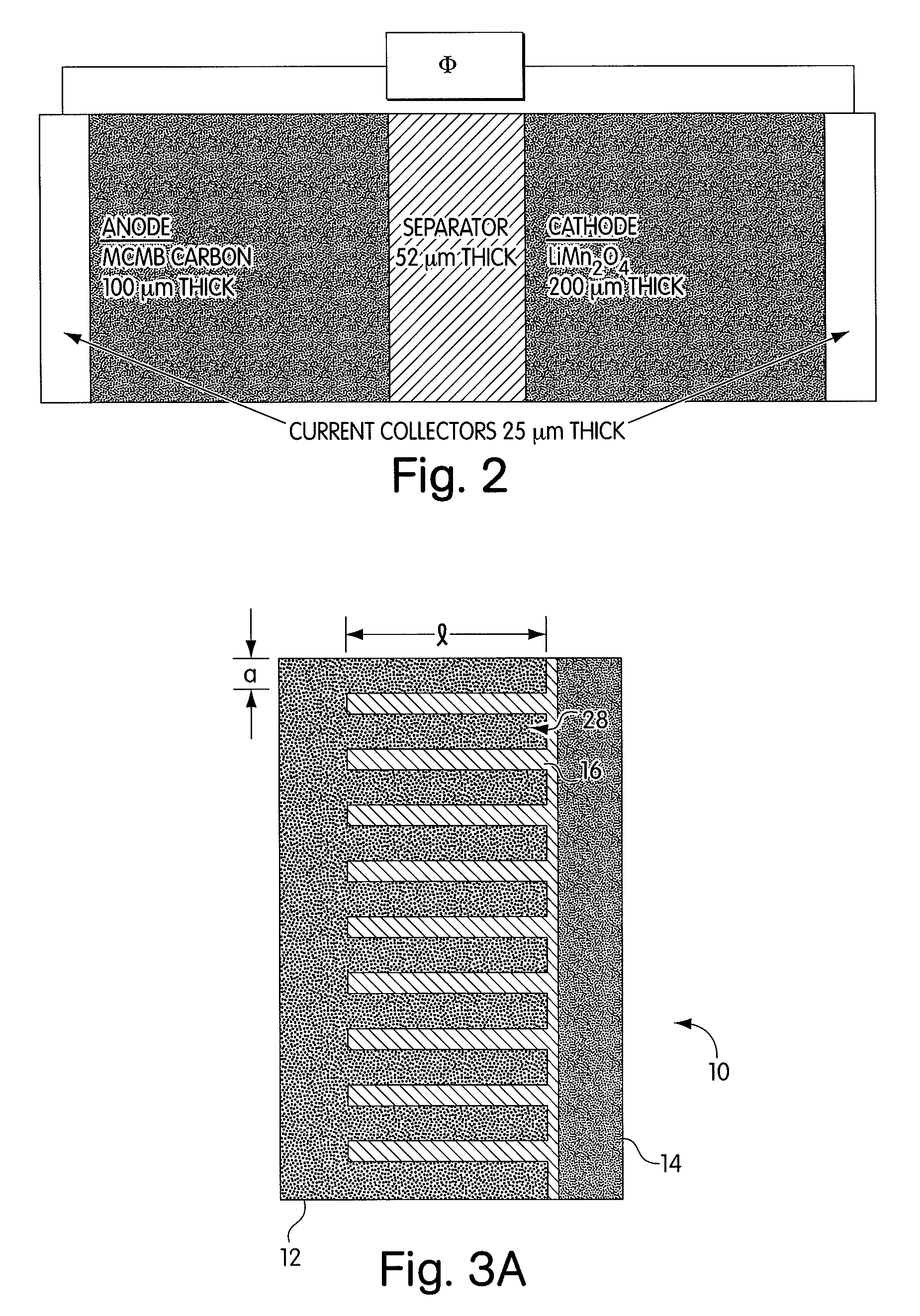Reticulated and controlled porosity battery structures
a battery structure and porosity technology, applied in the field of bipolar devices, can solve the problems of reducing the energy density of the battery, reducing the discharge rate, and limiting the rate, and achieve the effect of facilitating the provision of energy
- Summary
- Abstract
- Description
- Claims
- Application Information
AI Technical Summary
Benefits of technology
Problems solved by technology
Method used
Image
Examples
##ic example 1
Prophetic Example 1
Lithium Battery Prepared by Sequential Deposition
[0070]A suspension can be prepared of a fine powder lithium storage cathode such as LiCoO2, LiNiO2, LiMnO2, LiMn2O4, LiFePO4, V2O5, Li3Bi, Li3Sb, or other such cathodes well-known to those skilled in the art, in a solvent with a binder, optionally a conductive additive such as carbon, and other additives well-known to impart characteristics to the suspension allowing it to be deposited in thin layers using stenciling, screen printing, inkjet printing, or lithographic methods selected to allow a lateral resolution to the printed layer that is within the desired dimensional ranges. A separate like suspension can be prepared of a fine powder lithium storage anode such as carbon, Sn, Sb, Al, Zn, Ag, LiAl or other anode materials known to those skilled in the art. The cathode suspension and anode suspension are deposited layer by layer, providing a periodic or aperiodic reticulated or interdigitated structure as describe...
##ic example 2
Prophetic Example 2
Battery Produced by Printing and Coating
[0073]A first electrode with a reticulated or interdigitated structure, either cathode or anode, is prepared using the materials and methods of Example 1. At the free surface of the printed structure, a continuous film of a binder or polymer electrolyte can be formed. The film can form a physical separator between anode and cathode. The film can be formed by self-segregation (wetting) of the binder solution to the free surface of the printed electrode. Optionally, the surface film can be formed by coating with a liquid binder or electrolyte solution followed by drying, or by vapor deposition techniques known to those skilled in the art of thin film materials preparation.
[0074]A conformal coating of a liquid suspension can be applied to the formed structure to create the counter electrode. The indentations of the latter fill in complementary fashion to the structure of the first electrode, leaving a smooth and flat outer surf...
##ic example 3
Prophetic Example 3
Battery Produced by Embossing and Coating
[0075]A layer of a first electrode, either cathode or anode, formulated of the materials and by the methods of Example 1, is cast or coated in a layer upon a metal foil current collector or an insulating film. This layer is formulated by methods known to those skilled in the art to have rheological characteristics appropriate for thick film processing, for example, by screen printing, tape casting, web coating, and similar processes. The surface of the first layer is then embossed with a die to leave a reticulated surface with dimensions as desired. To this shaped surface is applied a counterelectrode by the conformal coating material and process described in Example 2. The assembly is dried and optionally heated for consolidation and a current collector is applied.
[0076]A film of binder or electrolyte is applied before or after the embossing step, and before coating with the counterelectrode formulation.
Prophetic Example N...
PUM
| Property | Measurement | Unit |
|---|---|---|
| length | aaaaa | aaaaa |
| average distance | aaaaa | aaaaa |
| average distance | aaaaa | aaaaa |
Abstract
Description
Claims
Application Information
 Login to View More
Login to View More - R&D
- Intellectual Property
- Life Sciences
- Materials
- Tech Scout
- Unparalleled Data Quality
- Higher Quality Content
- 60% Fewer Hallucinations
Browse by: Latest US Patents, China's latest patents, Technical Efficacy Thesaurus, Application Domain, Technology Topic, Popular Technical Reports.
© 2025 PatSnap. All rights reserved.Legal|Privacy policy|Modern Slavery Act Transparency Statement|Sitemap|About US| Contact US: help@patsnap.com



